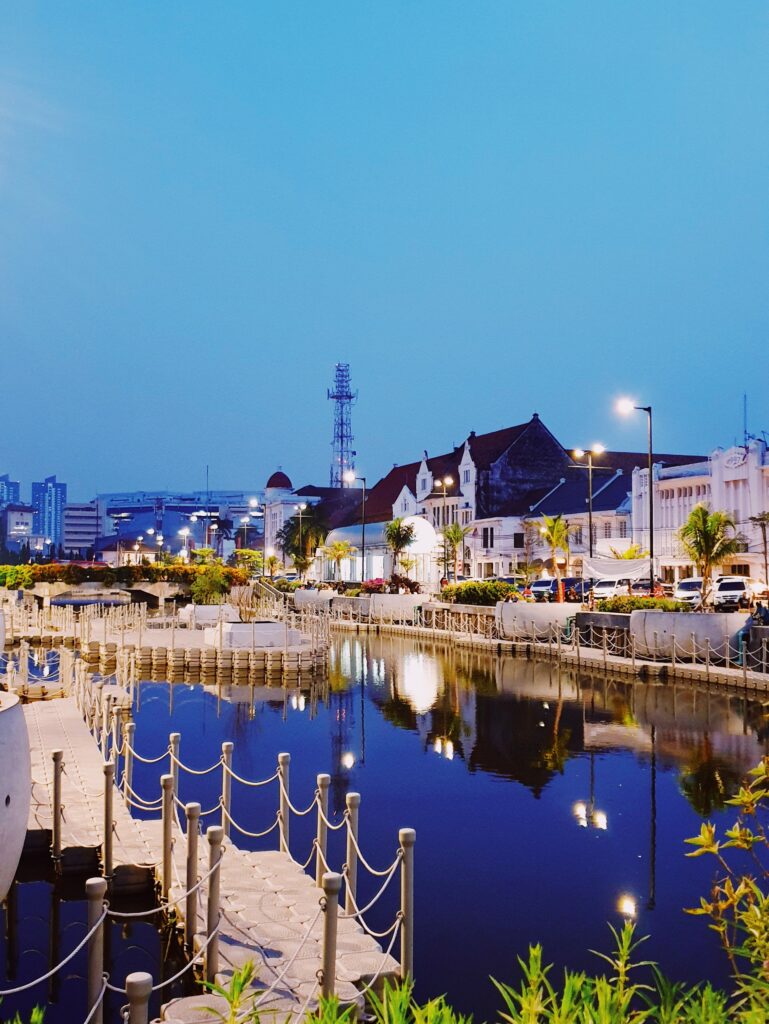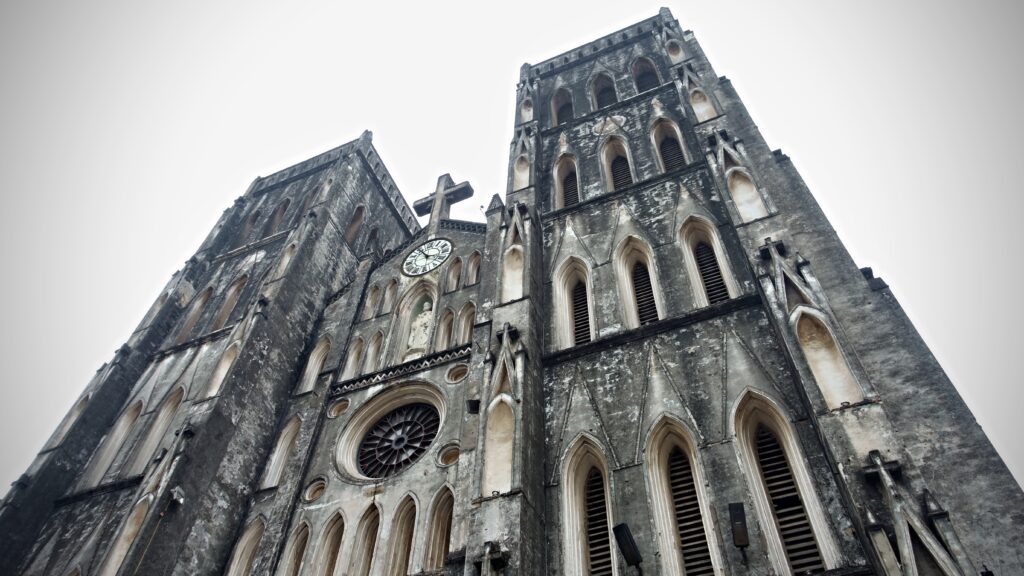Southeast Asia possesses an abundance of history from the colonial era, which plays a vital role in contributing to the region’s growth, particularly in urban development. In addition, This development resulted in the existence of beautiful historical cities across Southeast Asia, which we can witness these days.
Here is the list of major historical cities in Southeast Asia, which started from a very humble beginning of small towns to bustling cities. Nowadays, these cities play a critical role in governmental activities, tourism, business activities, entertainment, and even becoming the country capital for some countries in South East Asia.
Jakarta, Indonesia

The word “Jakarta” came from the word “Jayakarta”, which has the meaning victorious city. Jakarta started its humble beginning as a port city known as Sunda Kelapa. This port became a crucial trading hub where various cultures from Arab, China, and India, came to influence and enrich the cultural values and history of the city.

After a few years, European countries like the Portuguese and the Dutch started to arrive and established their colonies around the port. After a few years of conflict, the Dutch were able to gain full control of the city and named the city from “Jayakarta” to “Batavia”. Furthermore, the Dutch also put Batavia as their capital city. The trade of coffee, sugar, and spices contributes a lot to the economy. Therefore, It resulted in Batavia became an important trading hub and turned into a prosperous city.
After the independence of Indonesia, the Dutch left much tangible colonial heritage like buildings, roads, and past infrastructures. This heritage was mainly discovered in Jakarta, where many Art Deco buildings and colonial architecture still exist. To witness this heritage, visitors can visit some places like kota tua or usually known as Jakarta Old Town. This is the place where the Dutch East Indies established their government and administration center in colonizing Indonesia.
Even these days, these buildings are still operating and used by the Indonesian government. One of the most famous examples can be seen from Indonesia’s presidential palace based in Jakarta. The building started its construction in 1869 and finished in 1873. After the construction, the Dutch renamed this place Paleis van de Gouverneur Generaal (Palace of the Governor-General).
Melaka City, Malaysia

The history of Melaka started with the establishment of the city in 1400 by a Srivijaya prince called Parameswara. At its beginning, Malacca was a small coastal village which later turned into the capital city of the Malaca Sultanate. After the fall of the Melaka sultanate, the city became an important trading hub during the Portuguese, Dutch, and British colonial era. These different eras contributed an abundance of histories, culture, and architectural values to the cities.
In 1824, the British successfully put their influence on the Malay Peninsula. Thus, the city’s development grows even faster during the British colonial era. Under British rule, they dismantled the old fort of Melaka. In addition, they created public infrastructures in the cities such as; back alleys, fire alleys, pedestrian arcades, back yards, and chimneys.
Although rulers in Melaka keep on changing in the past, the successors were able to keep the tangible heritage mostly intact to these days. Nowadays, Melaka considered one of the cities in Malaysia with the most abundant historical values. In 2008, Malacca came under the list of the world heritage site. These days, visitors are still able to see historical sites such as:
- Stadthuys: Built by the Dutch between 1641 and 1660 as their administrative capital on the ruins of the Portuguese fort.
- St Paul’s Church: Constructed by the Portuguese under Captain Duarte Coelho. However, the Dutch damaged this site during their invasion of Melaka in 1641.
- Porta de Santiago: A major historical landmark in Melaka. Built by Alfonso de Albuquerque with the aim to protect the new Portuguese colony in Melaka from foreign invaders.
- Melaka Sultanate Palace: A wooden replica of Malacca’s sultanate palace, built based on the 15th-century palace. This site contains thousands of artifacts, photographs, and miniatures of the past glory of the Melaka Sultanate.
Singapore
Stanford Raffles, a British governor arrived in Singapore on 28 January 1819 and he decided to choose the island as a new port for the British empire. Singapore became a part of the straits settlements and also the region’s capital in 1836. In the 1890s, Singapore became a global center for rubber sorting and export.

Raffles himself initiated a town plan for Central Singapore, which under his direction created a commercial center (Shenton Way) and also constructed government buildings around Fort Canning. Raffles successfully transformed Singapore from a backward undeveloped island into an important colonial outpost. The establishment of hospitals, schools, a water supply system and more basic infrastructures enhanced Singapore’s landscape and attract immigrants from India and China to find more opportunities.
Nowadays, Singapore’s transformation during the colonial era has led to its development. Walking through Singapore’s central districts, visitors will be able to see plenty of heritage buildings with high historical values from the British era. Most of these buildings have been preserved in very good condition. Some of the buildings also still standing and used by Singaporeans for offices, restaurants, cafes, and boutique establishments. Below is the list of the famous colonial landmarks that are still standing:
- St Andrew’s Cathedral: Singapore’s oldest cathedral and the first Anglican church in Singapore.
- Victoria Theatre and Concert Hall: Originally built as Singapore’s town hall. During the second world war, the function changed to a hospital until it was changed once again into a performance venue.
- National Museum of Singapore: The design resembles the Royal Albert Hall in London. Originally used to display the region’s cultural and historical artifacts. Now this place was dedicated to Singapore’s art, culture, and history.
- Old Supreme Court: the former courthouse and supreme court of Singapore. In 2015, this building has been converted into the national gallery of Singapore. To this day, Singaporeans still use this landmark to help national day parade.
Manila-Intramuros, Philippines

The walled city of Intramuros founded and established in 1571 by the Spanish people. In 1574, Chinese pirates attack and destroyed the city before the Spaniards repulsed the pirates. In order to anticipate more invasions, the survivors started the construction of the walls to protect the city. During 400 years of the Spanish colonial period in the Philippines, Intramuros served as the administrative center of the colony.
Back at colonial times, only the Spanish elites and mestizos allowed to live inside the wall. Inside the walls, people can find everything they need. Buildings such as governmental buildings, churches, hospitals, military barracks, schools, and houses. In the past years, the renovation took part in most parts of Intramuros. This renovation occurred due to various battles, fires, and earthquakes that occurred during the 1800s.

During the American occupation of the Philippines, they made a drastic change in Intramuros. Fort Santiago became the main headquarter of the United States Army in the Philippines and the ayuntamiento became the Philippine commission of the United States. In addition, the Americans removed some of the city walls and use them for construction happening around Manila. Also, they breached some parts of the walls to give easier access to the people.
These days, visitors coming to intramuros still able to witness famous landmarks from the Spanish colonial era. These landmarks include the famous:
- Fort Santiago: a citadel built by governor Miguel Lopez de Legazpi to protect the newly established city of Manila.
- Manila cathedral: considered to be the oldest and most famous church in Asia.
- Plaza de Roma: The center of the city built by the Spaniards for various public events and even bullfighting.
- San Agustin Church and Museum: The oldest church in the Philippines and a tomb for the Philippines’ first governor-general, Miguel Lopez de Legazpi. In addition, this church has its own monastery which also converted into a museum.
- Palacio Del Gobernador: Built as the official residence and office of the Spanish official. Nowadays, it turns into government offices.
- Ayuntamiento de Manila: The seat of Manila city council, which still used these days.
Hanoi, Vietnam
The French came to colonize Vietnam and its surroundings back in the 1880s. Vietnam, Laos and Cambodia came under the French control and refer as Indochine Français (French Indochina). The French chose Hanoi as the capital of French Indochina from 1902-1945. The city of Hanoi has its unique characteristics, where both French architecture and oriental design mixed in a lot of the buildings in Hanoi.

According to Hanoi Times (2022), after the French invaders took the city, French architects started to designed Hanoi’s streetscape in 1893. They built a road that link the French concession and the citadel to give easier access to the people. In addition, the French built a cathedral in the city and colonial residence in the southern part of the city. Later on, they also built military quarters for the French military inside the citadel.
The first large-scale construction began in the early 1900s, when this project transformed the landscape of Hanoi. The establishment of broad boulevards known as Rue Paul Bert, Rollandes, Carreau, and Gambetta happened during this period of time. The idea of Hanoi’s urban planning is to create different public buildings, which are not scattered across the city. But to put everything in 1 quarter.

From the late 1890s to 1900s, French grandiose buildings started to establish in the city of Hanoi. Some of the famous buildings include; the Hanoi post office, Hoa Lo prison, French army headquarter, Hanoi supreme court, and French governor general’s palace. In addition, the French also created hundreds of hundreds of villas across Hanoi.
Colonial construction in Hanoi reached its peak when the French decided to create Hanoi opera house and a Metropole Hanoi hotel. The architectural style of this opera house has its resemblance to the opera house located in France. People believed that the construction of the Hanoi opera house burdened the French budget for decades. These days, all the buildings mentioned still visible to all tourists visiting Hanoi.
References
- https://www.holidify.com/pages/history-of-jakarta-3913.html
- https://www.theedgemarkets.com/article/cultural-and-historical-significance-old-melaka
- http://www.positivelyfilipino.com/magazine/inside-the-walled-city-of-intramuros
- https://www.hotels.com/go/singapore/singapore-history
- https://www.marinabaysands.com/guides/singapore-culture-arts/colonial-architecture-guide.html
- https://alphahistory.com/vietnamwar/french-colonialism-in-vietnam/
- https://www.vietnamonline.com/destination/hanoi/culture/colonial-architecture.html
- https://hanoitimes.vn/old-villas-in-hanoi-an-imprint-of-french-architecture-320668.html

2 thoughts on “Top 5 List of Historical Cities in Southeast Asia”